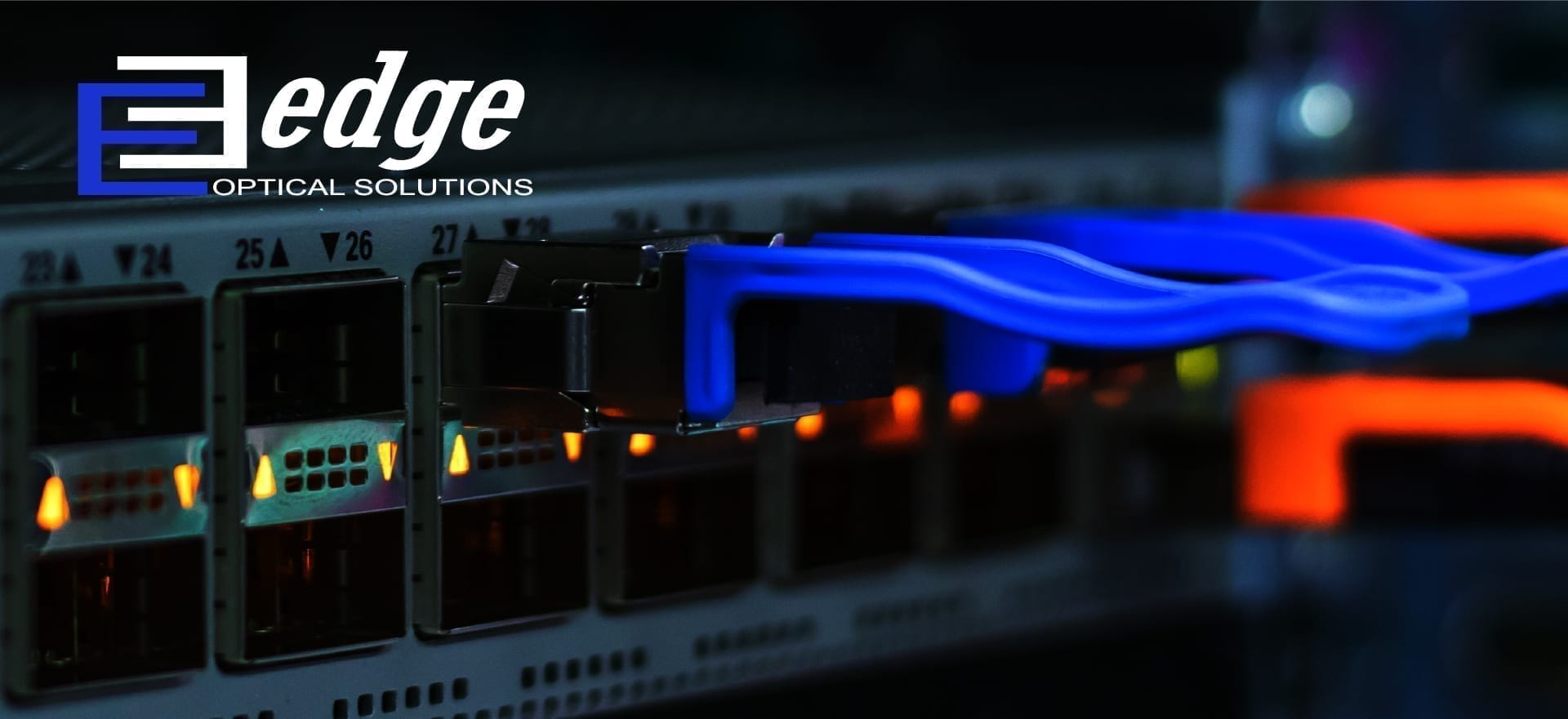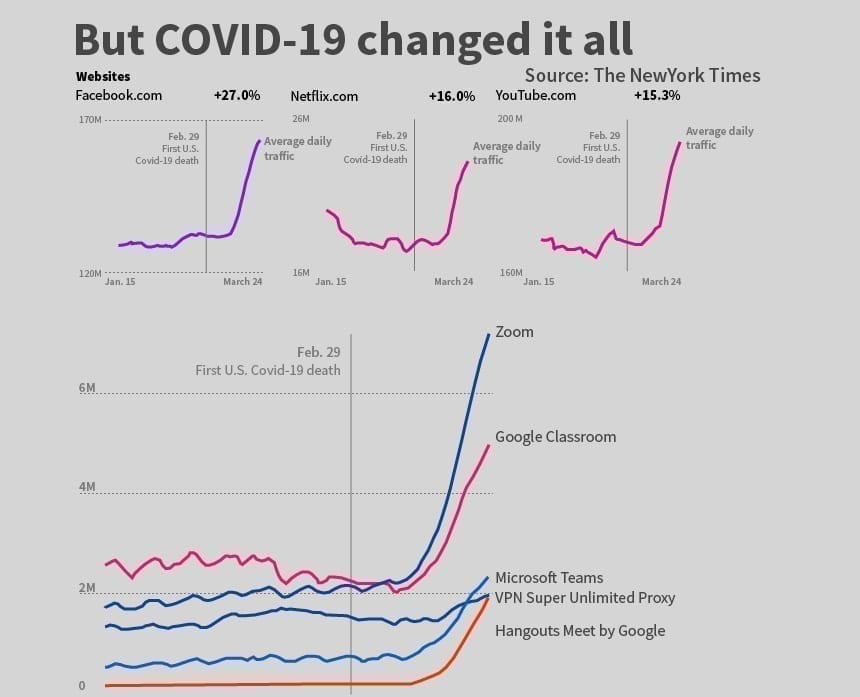
400G Ethernet Transceivers – Introduction
400G Ethernet Transceivers introduction is so important right now as 400G Ethernet is the big thing that everybody is and will be talking about for years to come. 400 GbE is the next big step since 100GE. Being and staying informed and up to date with the 400G era interfaces is a must. That is why next paragraphs will go over:
- 400G Ethernet Transceivers Demand, Driving Force and Standard
- DSP Empowered 400G
- PAM4 Basics
- 400G Ethernet Transceivers Capable Form-Factors (QSFP-DD, OSFP, CFP8)
- 400G QSFP-DD Transceiver Roots in 100G QSFP28 Modules
- 400G QSFP-DD Transceiver Types
- Road to the Next Big Leap
- Summary
1. 400G Ethernet Transceivers Demand, Driving Force and Standard
Since as early as beginning of 2018 Demand for 400G Optics has been present in Tier 1 Data Centers. The main driver for this has been Data Centers that host and utilize Cloud based services and increase in the Internet connected device and user amount. It is not a secret that IoT (Internet of things) is and will increase dramatically with devices becoming more reliant to exchanging data with other devices and systems over the Internet. To improve the throughput capabilities and reduce latency 5G NR (New Radio) technology has been developed to ensure the performance of Fronthaul and Backhaul. More on this in Metro Transport Network in 2019 and CPRI vs OBSAI articles.
Due to the massive intra and inter Data Center traffic IEEE 802.3bs defining 400GbE over optical physical media has been introduced in late 2017. With a more recent addition of IEEE 802.3cm defining 400GbE over multimode fiber utilizing 4 or 8 transmission lines. However, there are several additional standards that are under way to be approved in the 2021.
2. DSP Empowered 400G
Previously, to upgrade from 100G to 400G connection you needed to add extra communication lines performing at 100G. Now it is possible to transition from 100G to 400G by simply upgrading each side of connection without touching or adding new lines of communication. This is possible due to Monumental improvements in DSP (digital signal processor) quality and production costs. DSP acts as a glue to connect transceiver electrical and optical interfaces. It is a Gearbox that converts, for example, 8 electrical channels of 50G PAM4 signals to 4 optical channels of 100G PAM4 signals. Nevertheless, DSP can utilize PAM4 due to receiving CRC retimer and FEC Block integration to make sense of all the noise.
3. PAM4 Basics
From this a question can come up – What is PAM4? In its essence PAM4 is what it says Pulse Amplitude Modulation 4-level. It allows to transfer two bits at the same time.
This is a significant improvement over the most common encoding for 5G enabling transceivers like 25G SFP28 and 100G QSFP28 that use NRZ (Non-Return-to-Zero), i.e., PAM2 (Pulse Amplitude Modulation 2-level).
However, there are important drawbacks for PAM4 when compared to NRZ. PAM4 increases SNR (Signal-Noise Ratio) by -9.54 dB (Link Budget Penalty) and higher requirements for link quality are mandatory. For example, clock stability and receiver quality. More on this in 100G Single Lambda [https://edgeoptic.com/100g-pam4-single-lambda/] article.
4. 400G Ethernet Transceivers Capable Form-Factors (QSFP-DD, OSFP, CFP8)
When talking about transceivers, form-factor and its capabilities play a vital role. Adding to this, widespread adaptation of 400G Ethernet Transceivers is the next big step. That is why there is a debate on the best suited Form-Factor for 400G. The main competing form factors are QSFP-DD, OSFP and CFP8. 400G Transceiver Form Factors shows comparison between said three form-factors.
Each form-factor has advantages and drawbacks. There will be applications and solutions that will utilize one of these QSFP-DD, OSFP or CFP8 form-factors to ensure maximum efficiency.
However, QSFP-DD at current state looks like a favorite due to how much of industry is in love with QSFP form-factor and 100G QSFP28 modules. Additionally, QSFP-DD provides the greatest Port Density compared to the competition. This gives QSFP-DD manufacturers much greater appeal than the new OSFP form-factor modules and bulkier CFP8 modules. Furthermore, QSFP-DD is developed to ensure backward compatibility with QSFP from-factor ports. Allowing for a more gradual update from upgrade 100G QSFP28 systems to 400G capable solutions.
Nevertheless, Power Consumption – Maximum amount of Power that can be dissipated by the module without damaging internal components – is of great importance. Main Power Consumption comes from Micro-Controller and PAM4 DSP that have to perform at mind boggling speed. Solutions are developed to improve efficiency of QSFP-DD to ensure internal component heating will be reduced below critical. An upside is the emergence of practical and applied EUV (Extreme Ultraviolet Lithography) that will reduce the power draw of logic components.
| Check out our 400G QSFP-DD Portfolio: |
|
400G QSFP-DD
|
5. 400G QSFP-DD Transceiver Roots in 100G QSFP28 Modules
All of this leads to understanding 400G QSFP-DD (Double Density) form-factor and technology used to ensure connection between both ends of the line. As previously mentioned in DSP section, 400G is the upgrade from 100G that is enabled by improved DSP and use of PAM4. However, it is also different from QSFP28 by having 4 additional Tx and Rx lanes that requires an addition of one extra electrical connector to ensure the space for said Tx and Rx lanes. This results in 8 lanes of 50G PAM4 traffic between the host and the pluggable 400G QSFP-DD. From there DSP takes over to produce the required optical 4 lanes of 100G PAM4 optical signal. (400G QSFP-DD SR8 converts 8 electrical signal lanes to optical lanes both using 50G PAM4.)
6. 400G QSFP-DD Transceiver Types
The QSFP-DD and QSFP28 similarities do not stop there as technology is also adapted. Below 400G Transceiver Types image shows the main 400G QSFP-DD parameters and are sorted by Industry Name.
Easiest way to see differences in technology that is applied is by looking at Wavelength column. It can be split in five parts – SR8, PSM4, CWDM4, LWDM4 and LWDM8. With the exception of SR8 and LWDM8 that adds to lanes or wavelengths used, all of the technology principles are brought over from QSFP28. More on these principles can be read on in 100G QSFP28 module types and main differences article. Additionally, MPO [Split channel design] is used for shorter distances and LC [Single multiplexed channel] design is used for longer distances which currently are up to 40km with 400G QSFP-DD 80km modules around the corner.
7. Road to the Next Big Leap
Although 400G QSFP-DD 80km sounds impressive, future is even more grand in its scale. Adding to this is the increase in working or studying remotely or from home. This has lit a huge fire under the pot. This can be seen in Cisco Projections 2017 that expected a 26% year on year growth for IP Traffic.
However, this has been broken in the year 2020. In just one-month traffic increased by a years’ worth from seen in the Cisco Projections 2017.
As mentioned before, the pot has been smoking to keep up with this staggering change. Only by going faster, upgrading from 100G to 400G may not be enough to ensure that everyone stays connected. Thus, a call for 800G, 1T, 1600G have been heard and industry is under a timer to increase the bandwidth once more.
8. Summary
In short, 400G has proven the ingenuity of mankind once more. It has been a long journey since the inception of First Ethernet experiments by Bob Metcalfe in 1972. Now 1G, 10G, 40G and 100G sound self-evident and nothing of importance. However, all of these achievements have served as stepping blocks for The World of Today with bright hopes for the future. We highly appreciate the time You spent reading this and if You have any questions or comments, feel free to reach us by e-mail sales@edgeoptic.com or by giving us a call at +371 22084457.







